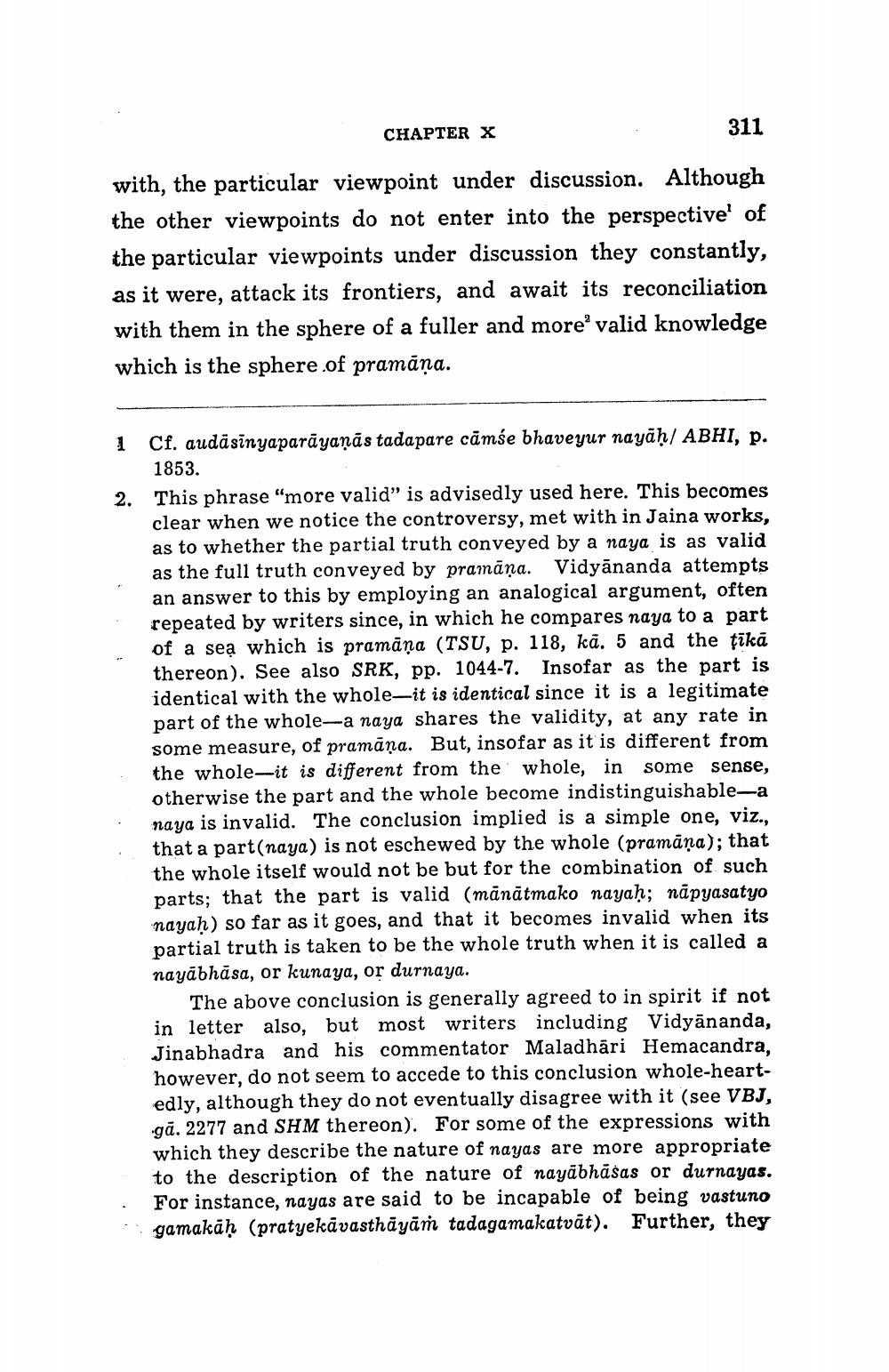________________
CHAPTER X
311 with, the particular viewpoint under discussion. Although the other viewpoints do not enter into the perspective of the particular viewpoints under discussion they constantly, as it were, attack its frontiers, and await its reconciliation with them in the sphere of a fuller and more' valid knowledge which is the sphere.of pramāņa.
1 Cf. audāsīnyaparāyaṇās tadapare cāmse bhaveyur nayāḥ/ ABHI, p.
1853. 2. This phrase "more valid” is advisedly used here. This becomes
clear when we notice the controversy, met with in Jaina works, as to whether the partial truth conveyed by a naya is as valid as the full truth conveyed by pramāņa. Vidyānanda attempts an answer to this by employing an analogical argument, often repeated by writers since, in which he compares naya to a part of a sea which is pramāņa (TSU, p. 118, ka. 5 and the tīkā thereon). See also SRK, pp. 1044-7. Insofar as the part is identical with the whole-it is identical since it is a legitimate part of the whole-a naya shares the validity, at any rate in some measure, of pramāņa. But, insofar as it is different from the whole-it is different from the whole, in some sense, otherwise the part and the whole become indistinguishable-a naya is invalid. The conclusion implied is a simple one, viz., that a part(naya) is not eschewed by the whole (pramāņa); that the whole itself would not be but for the combination of such parts; that the part is valid (mānātmako nayah; näpyasatyo nayah) so far as it goes, and that it becomes invalid when its partial truth is taken to be the whole truth when it is called a nayābhāsa, or kunaya, or durnaya.
The above conclusion is generally agreed to in spirit if not in letter also, but most writers including Vidyānanda, Jinabhadra and his commentator Maladhāri Hemacandra, however, do not seem to accede to this conclusion whole-heartedly, although they do not eventually disagree with it (see VBJ, gā. 2277 and SHM thereon). For some of the expressions with which they describe the nature of nayas are more appropriate to the description of the nature of nayābhāsas or durnayas. For instance, nayas are said to be incapable of being vastuno gamakāḥ (pratyekāvasthāyāṁ tadagamakatvat). Further, they




